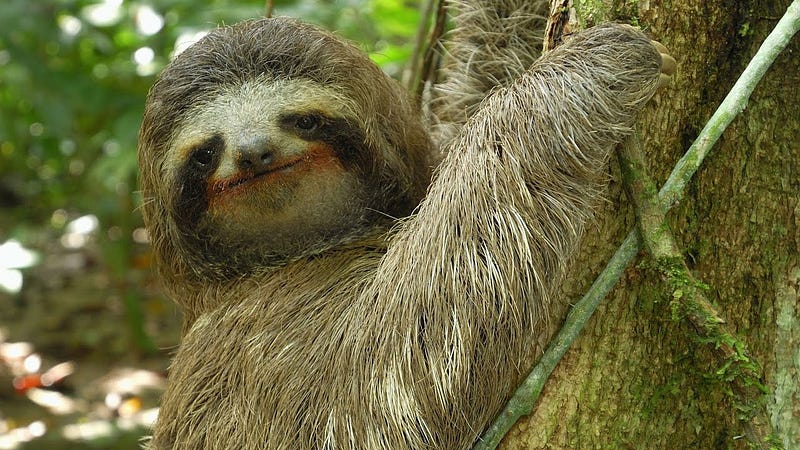Sloths: The Intelligent Creatures That Evolved Independently
Written on
Chapter 1: Understanding Sloths
Sloths are often mischaracterized as lazy and uncomplicated beings; however, they possess a high degree of complexity and intelligence. These fascinating creatures have adapted to arboreal life, spending the majority of their time suspended upside down while feasting on leaves. Interestingly, there are two distinct types of sloths, which are not closely related.

Section 1.1: The Evolutionary Journey of Sloths
The two-toed and three-toed sloths are more distantly related than humans and chimpanzees, having diverged around 30 million years ago. Both types of sloths have developed similar traits for tree living, including a slow metabolism, fur that provides camouflage, and a symbiotic relationship with algae. This phenomenon illustrates convergent evolution, where unrelated species evolve similar characteristics in response to similar environmental challenges.
Subsection 1.1.1: Ancestry and Adaptations
The common ancestor of sloths was a terrestrial creature equipped with strong forelimbs and curved claws, ideal for digging and later climbing. The silky anteater also exemplifies convergent evolution, as it can maneuver both above and below branches.
Section 1.2: The Intelligence of Sloths
Contrary to the perception of sloths as simple creatures, they possess intricate brains capable of processing substantial amounts of information. Rebecca Cliffe, a sloth researcher at Swansea University, notes, “Sloths are surprisingly smart and exhibit complex social behaviors, including vocalizations, grooming, and mating.”
Chapter 2: The Role of Sloths in Ecosystems
Sloths primarily feed on leaves, which are not only difficult to digest but also provide limited energy. Despite their slow pace, sloths symbolize the rainforest's biodiversity, evoking empathy and concern among people.
The first video, "Why Are Sloths So Slow?", delves into the reasons behind the sloth's leisurely lifestyle and unique adaptations.
The second video, "Sloth, the slowest mammal on Earth: two-toed & three-toed sloths of Costa Rica - Serious Biology #8," explores the two types of sloths and their ecological significance.
In conclusion, sloths are extraordinary animals that warrant our respect and admiration. They have undergone two significant evolutionary transitions to thrive in their environment, showcasing remarkable intelligence and social behaviors. Far from being lazy, they exemplify efficiency and adaptability—truly the slow and smart creatures we can learn from.